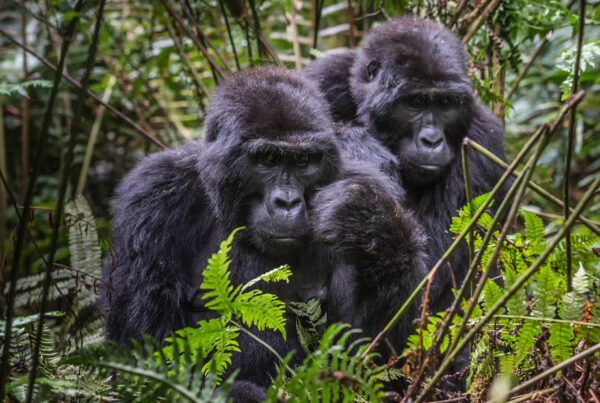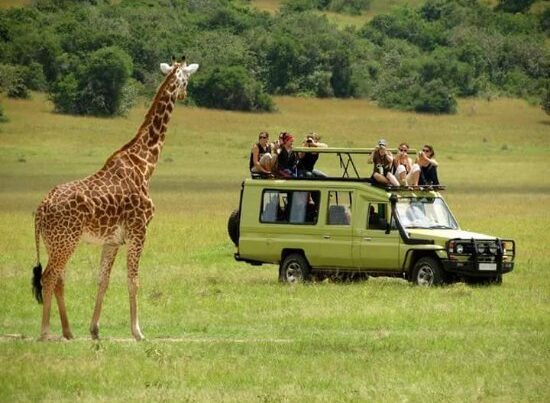Lake Victoria Gorilla Trekking: Ultimate Checklist for Culture Lovers
Where Wildlife Encounters Meet Cultural Immersion
The allure of Lake Victoria extends far beyond its vast waters and picturesque shores. Hidden within the verdant landscapes surrounding the lake lies a unique opportunity: gorilla trekking combined with cultural exploration. For travelers who value both adventure and heritage, this region offers an immersive experience where the raw power of the mountain gorillas intersects with the rich traditions of the communities that have long called this area home.
Culture lovers are often drawn to Uganda for its diverse social tapestry, ranging from traditional dance and music to local crafts and culinary practices. When paired with the profound encounter of observing gorillas in their natural habitat, Lake Victoria becomes a destination that satisfies both the desire for exploration and the appreciation of cultural depth.
Understanding the Gorilla Trekking Experience Near Lake Victoria
Gorilla trekking near Lake Victoria is conducted in forested regions that serve as corridors between national parks and the lake’s fertile surroundings. These forests are less expansive than those of Bwindi or Mgahinga, yet they maintain a dense canopy, diverse flora, and crucially, a presence of mountain gorillas.
Tracking these gorillas is guided by experienced rangers who monitor the animals’ movements daily. Trekking usually begins in the early morning hours, allowing travelers to encounter gorillas during their most active periods. The experience demands patience and attentiveness, as the gorillas’ social behaviors—feeding, grooming, and playing—offer unparalleled insights into primate life while providing opportunities for observation and photography.
Timing and Seasonal Considerations
The timing of the trek plays a critical role in both the success of sightings and the quality of the cultural experience. The wet season, occurring between March and May and again between September and November, transforms the forest into a lush environment where gorillas have ample access to fruits and vegetation. Trails, however, become more challenging, requiring sturdy footwear and careful navigation.
During the dry season, spanning December to February and June to August, the paths are more accessible, and cultural activities in surrounding communities are often easier to experience. Markets, festivals, and village gatherings are more frequent in these months, providing travelers with richer insights into the local traditions that have evolved alongside the natural environment.
Essential Preparations for Culture-Oriented Travelers
For culture lovers approaching gorilla trekking, preparation extends beyond standard trekking gear. Lightweight, breathable clothing in neutral colors is essential to blend with the forest environment while ensuring comfort. Sturdy hiking boots are recommended to navigate uneven terrain safely.
Travelers are encouraged to carry binoculars, a high-quality camera, and a notebook for capturing both wildlife observations and cultural experiences. Insect repellent and sun protection are also necessary due to the humid climate and varying exposure levels. Local currency is useful for purchasing crafts, food items, or participating in village experiences, which often provide authentic engagement opportunities.
Integrating Cultural Exploration into Gorilla Trekking
Gorilla trekking is complemented by a variety of cultural experiences available in the communities surrounding Lake Victoria. Villages host traditional dances, music performances, and storytelling sessions that offer insights into the historical and spiritual relationship between people and the land. Local artisans showcase crafts, including basket weaving, beadwork, and wood carving, reflecting centuries of skill and creativity.
Food is a crucial aspect of cultural immersion. Travelers can sample traditional dishes, such as fresh tilapia from Lake Victoria, matoke prepared with local herbs, and cassava-based meals. These culinary experiences not only nourish the body but also offer a tangible connection to the traditions and daily lives of the communities who live alongside the gorilla habitats.
The Trekking Day: What to Expect
A typical gorilla trekking day begins with an early briefing by rangers, who explain forest safety, chimpanzee and gorilla behaviors, and the importance of maintaining respectful distance. The trek progresses through dense undergrowth, bamboo thickets, and occasionally, swampy areas, requiring both physical endurance and attention to detail.
Upon locating a gorilla family, travelers are allowed a limited time to observe and photograph. During this period, silence is maintained to prevent disturbance, and careful observation is encouraged to appreciate the social structures of the gorillas. Mothers, infants, and silverbacks provide moments of fascination, each displaying behaviors that reflect intelligence, familial bonds, and adaptability within their environment.
After returning from the trek, cultural interactions can continue with guided village visits, participation in cooking demonstrations, or attendance at local performances. These activities ensure that the day remains balanced between natural exploration and cultural engagement.
Safety and Ethical Guidelines
The protection of gorillas and their habitat is paramount. Visitors are instructed to avoid physical contact, maintain a safe distance, and adhere to the instructions provided by rangers. Meals and snacks should not be shared with wildlife, and waste management practices must be strictly observed to prevent environmental impact.
Ethical engagement also extends to cultural experiences. Travelers are encouraged to approach village interactions with respect, avoid intrusive photography, and participate in activities in a way that supports the community without disrupting daily life. By doing so, the cultural exchange becomes mutually beneficial, fostering awareness and understanding.
Maximizing a Limited-Time Visit
For travelers with constrained schedules, careful planning is essential. Trekking permits should be secured in advance, and itineraries can be designed to combine morning wildlife excursions with afternoon cultural visits. Proximity to accommodation is also important, as staying close to the park or lakeside villages reduces travel time and allows for earlier starts and later participation in cultural events.
Even a two-day visit can be deeply rewarding when structured to include early morning trekking, mid-morning village tours, and evening culinary experiences. This approach ensures that travelers leave with both wildlife encounters and an appreciation for the social and cultural fabric of the Lake Victoria region.
Conservation Awareness and Cultural Responsibility
Participating in gorilla trekking and cultural tours carries a responsibility toward conservation and ethical tourism. Entrance fees and guided tours contribute to habitat protection, community development, and ongoing research efforts. By choosing responsibly managed experiences, travelers support initiatives that safeguard gorilla populations while preserving the cultural integrity of local communities.
Awareness of this interconnectedness enhances the overall experience. Observing gorillas and engaging with communities becomes more than a tourist activity; it transforms into an opportunity to witness and support sustainable coexistence between humans and wildlife.
A Journey Beyond Observation
Gorilla trekking near Lake Victoria is not merely a wildlife excursion; it is a journey that intertwines adventure, culture, and conservation. For culture lovers, it offers an opportunity to witness the majesty of gorillas while simultaneously engaging with the traditions, foods, and arts of communities that have harmoniously coexisted with these forests for generations.
By carefully planning, preparing, and participating with awareness and respect, travelers can maximize their experiences even with limited time. To ensure a seamless and enriching visit that combines all elements of adventure, culture, and ethical engagement, arrangements are best made through WildHorn Africa, whose expertise guarantees that every encounter, every meal, and every cultural interaction becomes a lasting memory of Uganda’s unparalleled natural and social heritage.





 WildHorn Africa – Authentic and unforgettable tours across Africa, guided by local experts who know the land, wildlife, and culture best.
WildHorn Africa – Authentic and unforgettable tours across Africa, guided by local experts who know the land, wildlife, and culture best.


